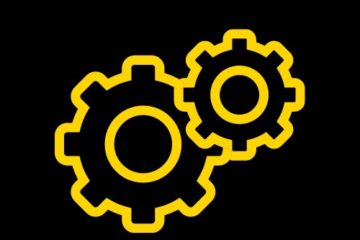Below is an article from Addy Adewusi’s Principles of Automation project.
Hello Automation Enthusiasts!
Today, I will be discussing the most important part of software-enabled automation: data. Similar to the word “automation” people use “data” to sound intelligent and thoughtful, but they rarely put the data in context, so the person reading or listening has no idea what it really means. So let’s define it.
What is data?
Data, in plain English, is an umbrella term for information. Below is Merriam-Webster’s definition of data:
1. factual information (such as measurements or statistics) used as a basis for reasoning, discussion, or calculation
2. information in digital form that can be transmitted or processed
3. information output by a sensing device or organ that includes both useful and irrelevant or redundant information and must be processed to be meaningful
(2007, September 7). Data. Definition of Data by Merriam-Webster. http://www.merriam-webster.com/dictionary/data
Factual Data
Let’s break down these definitions. The critical word in the first definition is factual. The first definition is describing data that a scientist, carpenter, researcher, or civil engineer would use. Examples of definition one data are:
- The temperature at noon on July 1st, 2021 in Atlanta, Georgia, USA
- The mass of 1 cubic foot of concrete
- The percent of Americans that graduate from high school
If you are not a scientist or researcher, but work in a business setting, here are some relatable examples of definition one data:
- Number of store locations in the United States
- Wages paid in July 2021
- Salesperson that generated the most revenue in fiscal year 2020
Digital Data
While factual data is useful, it is not the only type of useful data. Definition two defines data as “information in a digital form that can be transmitted or processed.” (Merriam-Webster.) This data may or may not be factual, but it is relatively easy to get and is necessary for software-enabled automation.
For example, let’s imagine a company’s decision to post a job opening online. They could hire a recruiter to hunt down candidates and validate their qualifications. However, it is scalable (remember this word) and possibly cheaper to have candidates self-report their eligibility and fill out an application online. The data the candidate provides may or may not be factual, but a human or automation software can filter through all of that data and find some candidates who appear to be a great fit for the role. Then, the candidates will go through a series of additional filters and screenings, like rounds of interviews, until the company finds the new addition to their team.
Aside: the analogy about online applications explains why interviews can seem like interrogations. Because your data is self-reported, corporations have no reason to believe that your experience and skills are facts. This also explains why companies are more likely to interview candidates referred by their current employees, as their employees are putting their reputations on the line by referring you as a candidate. You still won’t, however, avoid the additional screenings.
I am going to skip definition three, as I am not a biologist, but fortunately for you, software-enabled automation uses only digital data. While automators hope the digital data is factual, the only requirement for automation is that the data is in a digital form.
Types of Digital Data
Since we are talking about software-enabled automation and digital data, I have to give you a mini-crash course in computer science. Remember when I said data can come in many forms? Here are some of the forms, that I will now refer to as data types (you will understand why later) along with some examples from a common job application:
- String – a string of characters
- Ex:
- First Name
- Address
- Ex:
- Number – an integer
- Ex:
- Expected salary
- Hours available per week
- Ex:
- Boolean – data that only exists as true or false. They are usually displayed as a checkbox or a dropdown list with the options: Yes or No
- Ex:
- Are you currently employed?
- Are you related to an employee at this company?
- Ex:
- Date or time
- Ex.
- Date/time signed
- Available start date
- Ex.
- File – a packaged bundle of digital data
- Ex:
- Resume or cover letter
- Headshot photo
- Ex:
There are numerous other data types, but these are the most common data types for software-enabled automation.
Hopefully, you now have a basic understanding of digital data and its associated data types. In the next drop of Principles of Automation, I will explain why companies struggle to utilize the data that they have.
Stay tuned by following Principles of Automation on Callin, Twitter, Instagram or my professional website, linked in all of my bios.
